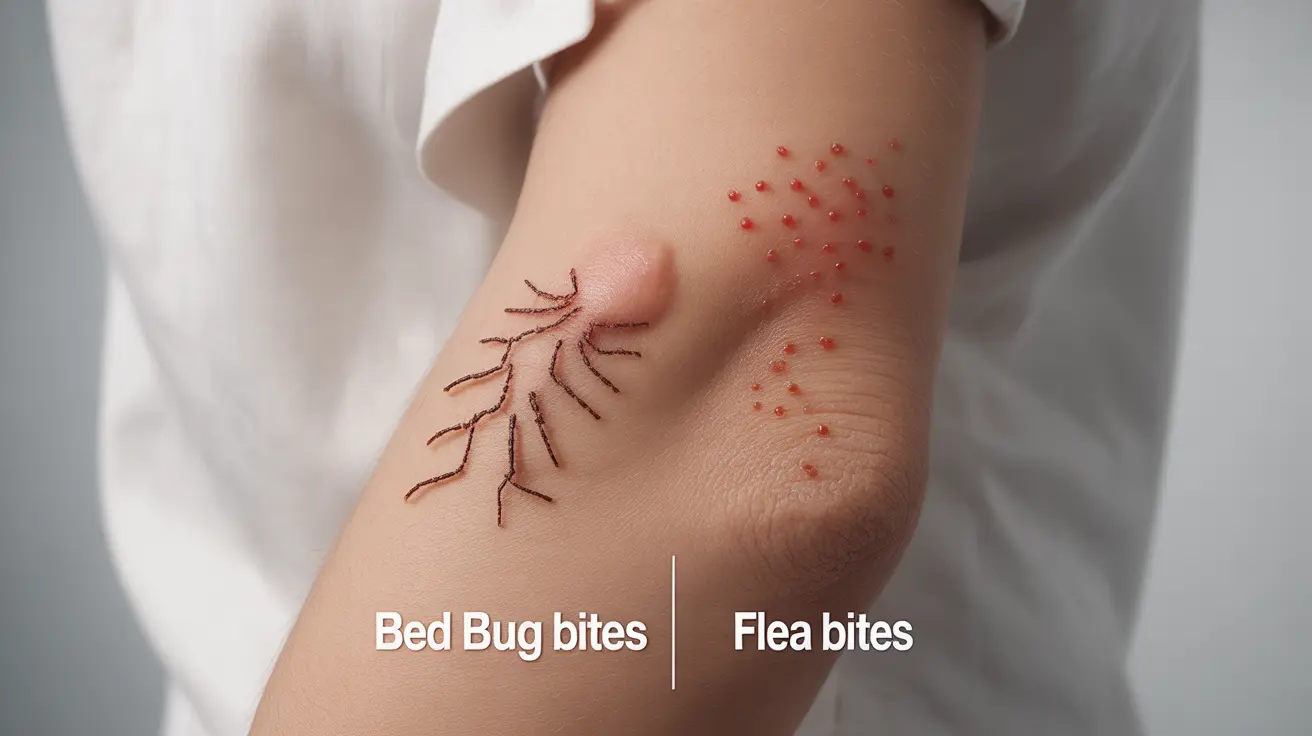Being able to distinguish between bed bug and flea bites is crucial for effective treatment and pest control. While both types of bites can cause discomfort and anxiety, they have distinct characteristics that can help you identify the culprit and take appropriate action. This comprehensive guide will help you understand the key differences, treatment options, and prevention strategies for both types of insect bites.
Physical Characteristics and Appearance
Bed bug and flea bites have distinct visual patterns and characteristics that can help you identify which pest is responsible for your discomfort. Understanding these differences is the first step in addressing the problem effectively.
Bed Bug Bite Patterns
Bed bug bites typically appear in distinctive patterns that can include:
- Linear or zigzag formations
- Groups of three to five bites (sometimes called "breakfast, lunch, and dinner" pattern)
- Clustered arrangements on exposed skin
- Flat, red welts that may develop a darker red center
Flea Bite Characteristics
Flea bites have their own unique presentation:
- Small, raised red bumps
- Random scattered pattern
- Often appear in clusters of three or four
- Surrounded by a reddish "halo" effect
Location and Distribution on the Body
The location of bites can be a telling indicator of which insect is responsible for the irritation. Different insects tend to prefer specific areas of the body for feeding.
Common Areas for Bed Bug Bites
Bed bugs typically target areas of exposed skin during sleep:
- Face, neck, and shoulders
- Arms and hands
- Upper body
- Any skin exposed while sleeping
Typical Flea Bite Locations
Fleas generally bite in predictable areas:
- Lower legs and ankles
- Feet and toes
- Waist area
- Areas where clothing fits tightly
Timing and Sensation of Bites
The onset of symptoms and sensations can vary significantly between bed bug and flea bites, providing another crucial clue for identification.
Bed Bug Bite Reactions
Bed bug bites often have a delayed reaction:
- May take 1-3 days for symptoms to appear
- Initially painless during the bite
- Gradual development of itching
- Can cause prolonged discomfort
Flea Bite Reactions
Flea bites typically produce immediate symptoms:
- Instant pain or stinging sensation
- Immediate itching
- Quick development of red welts
- Intense irritation within hours
Treatment and Relief Strategies
Both types of bites can be managed with similar treatment approaches, though timing and specific methods may vary based on the severity of symptoms:
- Apply calamine lotion or hydrocortisone cream
- Take oral antihistamines for severe itching
- Keep the affected area clean and dry
- Avoid scratching to prevent infection
- Use cold compresses to reduce swelling
Pest Control and Prevention
Addressing the root cause is essential for preventing future bites:
- Regularly inspect bedding and furniture
- Vacuum thoroughly and frequently
- Wash bedding in hot water weekly
- Consider professional pest control services
- Seal entry points around your home
Frequently Asked Questions
What are the main differences in appearance between bed bug bites and flea bites on humans?
Bed bug bites typically appear in linear or zigzag patterns of 3-5 bites, while flea bites are usually scattered randomly and appear as smaller, more concentrated red bumps with a halo effect.
Where on the body do flea bites usually occur compared to bed bug bites?
Flea bites commonly occur on the lower legs, ankles, and feet, while bed bug bites are usually found on exposed areas during sleep, such as the face, neck, arms, and upper body.
Why do flea bites itch immediately but bed bug bites itch after a delay?
Flea bites cause immediate itching due to the injection of an anticoagulant when they feed. Bed bug bites typically don't cause immediate reactions because their saliva contains an anesthetic, leading to delayed symptoms that may appear 1-3 days later.
How can I effectively treat and relieve itching from bed bug and flea bites?
Both types of bites can be treated with over-the-counter antihistamines, calamine lotion, and hydrocortisone cream. Cold compresses can help reduce swelling, and keeping the area clean prevents infection.
What steps should I take to identify and eliminate a flea or bed bug infestation in my home?
Start by thoroughly inspecting your home, particularly bedding, furniture, and pet areas. Vacuum extensively, wash all fabrics in hot water, and consider professional pest control services for severe infestations. Preventive measures include regular cleaning, sealing entry points, and maintaining pest control treatments as recommended.




